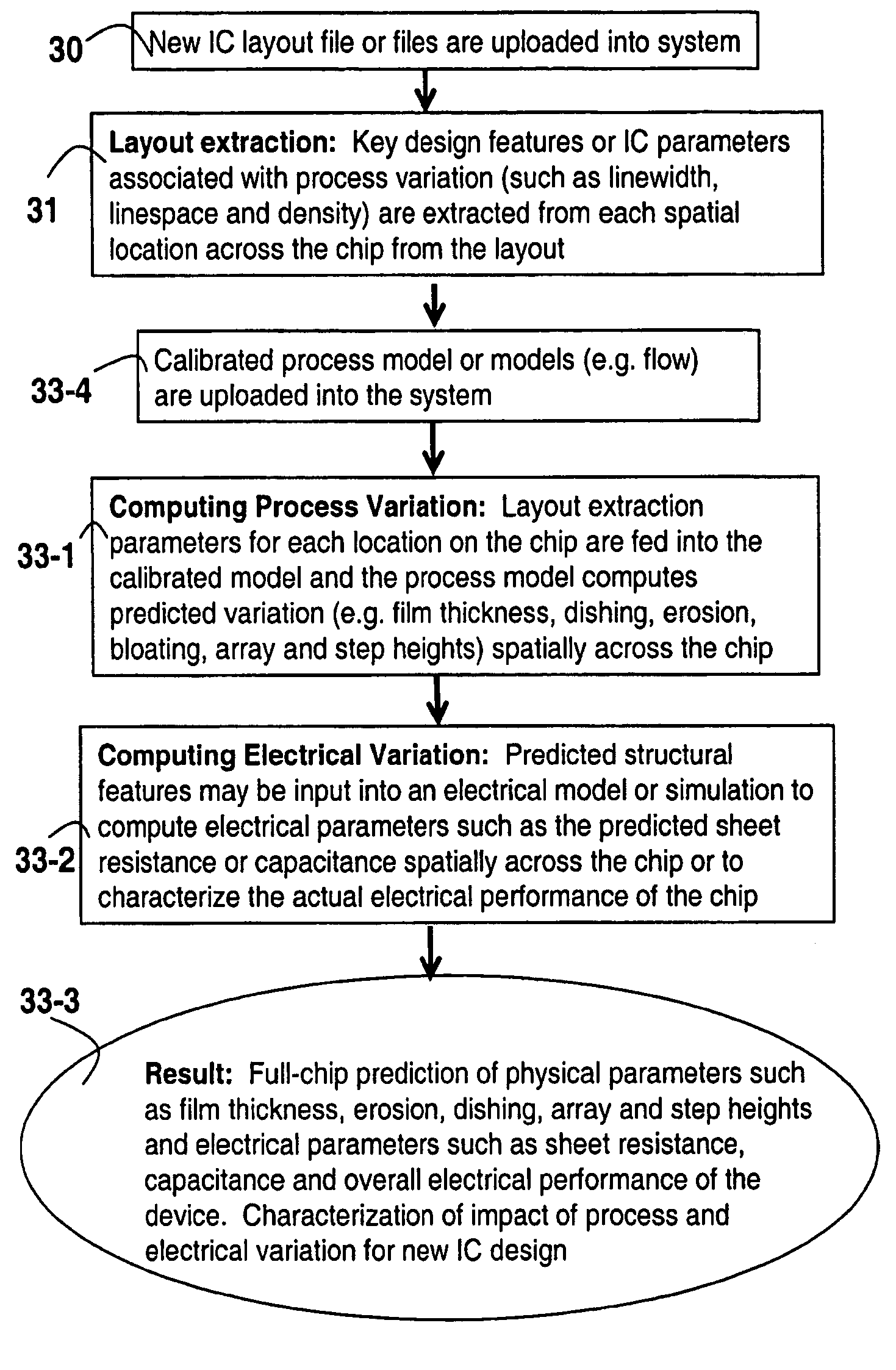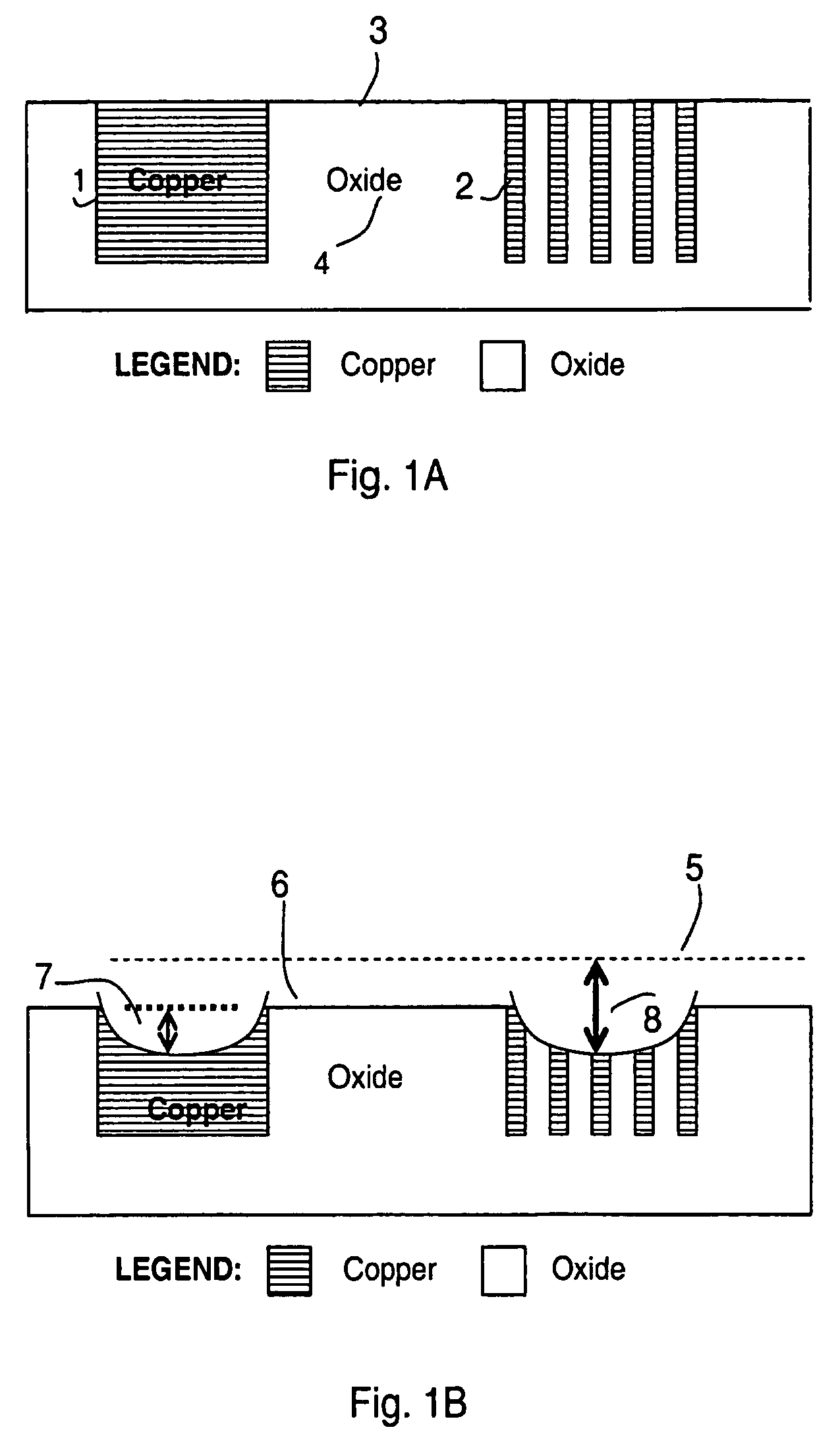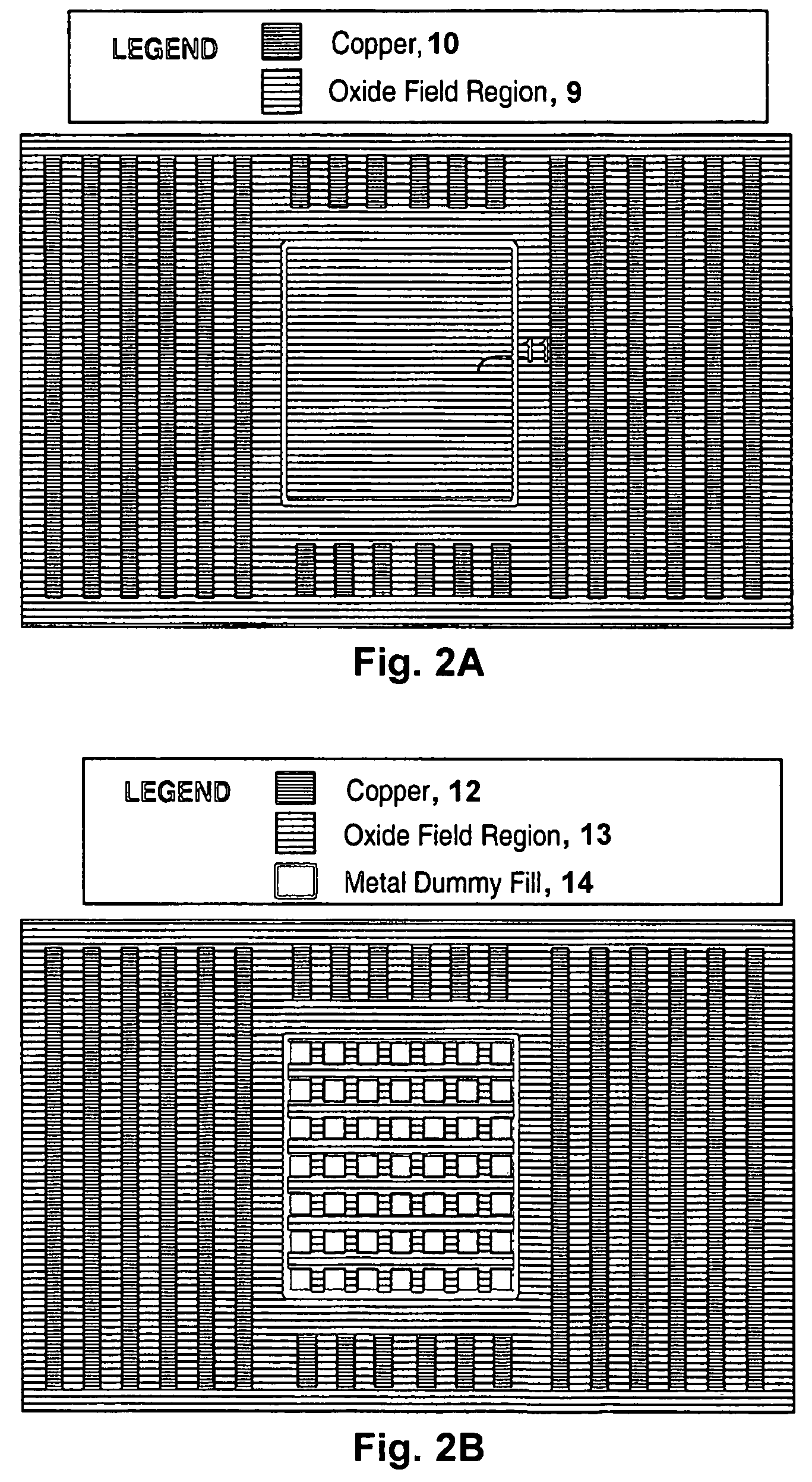Methods and systems for implementing dummy fill for integrated circuits
a technology of integrated circuits and filling devices, applied in the direction of program control, total factory control, instruments, etc., can solve the problems of decreasing the pattern density, post-cmp oxide thickness variation, and subsequent manufacturability and process integration problems, so as to improve the uniformity and electrical performance of the semiconductor device, minimize the variation of full-chip electrical parameters, and minimize the effect of full-chip film thickness variation
- Summary
- Abstract
- Description
- Claims
- Application Information
AI Technical Summary
Benefits of technology
Problems solved by technology
Method used
Image
Examples
Embodiment Construction
[0093]We describe a method of adding dummy fill to reduce process variations caused by dependencies in the electrochemical deposition and subsequent chemical mechanical polishing of interconnect features used in semiconductor devices. The variation in wafer quality (e.g. film thickness variation and surface topography variation such as dishing and erosion) and electrical parameters (resistance, capacitance, and noise) are modeled and simulated using semi-physical process models that may be calibrated to a particular process and tool for each step in a sequence of one or more steps within a process flow. Dummy fill structures are placed in the layout to improve thickness and surface topography uniformity of the manufactured wafer while maintaining the electrical parameters at the intended or designed values. The added structures are placed in such a way as to: modify the design layout parameters such as effective pattern density, maximum and minimum widths and spaces between structur...
PUM
 Login to View More
Login to View More Abstract
Description
Claims
Application Information
 Login to View More
Login to View More - R&D
- Intellectual Property
- Life Sciences
- Materials
- Tech Scout
- Unparalleled Data Quality
- Higher Quality Content
- 60% Fewer Hallucinations
Browse by: Latest US Patents, China's latest patents, Technical Efficacy Thesaurus, Application Domain, Technology Topic, Popular Technical Reports.
© 2025 PatSnap. All rights reserved.Legal|Privacy policy|Modern Slavery Act Transparency Statement|Sitemap|About US| Contact US: help@patsnap.com



